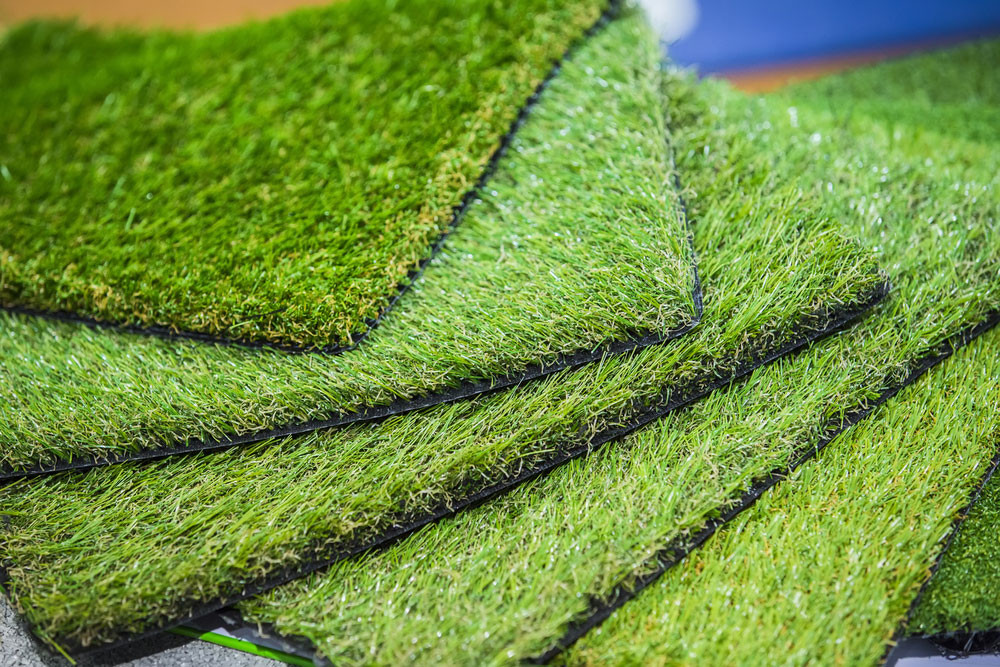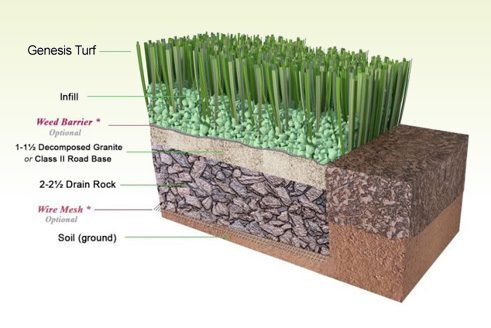Transform Your Outdoor Space with Arizona Artificial Turf for a Vibrant Green Look
Explore the Environmental Conveniences of Opting for Artificial Turf Solutions
The adoption of artificial grass solutions presents a compelling possibility to attend to pushing ecological obstacles. By dramatically lowering water use and lessening the application of hazardous chemicals, these options not just advertise lasting landscaping however also protect neighborhood ecosystems. The lower carbon impact associated with reduced upkeep tasks adds to a much more lasting technique to land administration. The ramifications of these benefits expand past plain preservation initiatives, increasing inquiries concerning their long-lasting effect on environment preservation and overall ecological equilibrium. Exploring these dimensions exposes a complicated interplay worth thinking about.
Water Conservation Perks
One of the most significant benefits of artificial lawn is its capability to conserve water. In contrast, artificial grass does not need watering, dramatically minimizing the total demand for water sources.
By eliminating the requirement for normal watering, fabricated grass adds to lasting landscape techniques and assists reduce the ecological effect of extreme water consumption. In addition, the preservation of water encompasses the reduction of runoff, which can cause soil disintegration and river contamination.
In addition, the installment of synthetic grass enables house owners and communities to allocate water sources a lot more effectively, concentrating on important usages such as alcohol consumption water and farming. The shift in the direction of synthetic grass not just promotes accountable water use yet additionally aligns with more comprehensive environmental objectives targeted at maintaining natural deposits.
As communities significantly focus on sustainability, the water conservation advantages of fabricated lawn provide an engaging case for its adoption in domestic and commercial landscape design projects.
Decreased Chemical Usage
The shift to synthetic grass significantly reduces the dependence on chemical therapies frequently used in all-natural lawn upkeep. Standard grass administration typically includes the application of pesticides, herbicides, and plant foods to advertise growth and control insects. These chemicals can pose dangers to human wellness, local wildlife, and the atmosphere, adding to soil and water contamination.
In contrast, artificial turf gets rid of the demand for these harmful materials. By decreasing the launch of synthetic substances right into the community, synthetic turf promotes much healthier soil and water systems.
Moreover, the lack of chemical drainage associated with man-made turf installations helps safeguard neighborhood rivers from contamination, sustaining marine life and preserving biodiversity. Turf installation phoenix az. As areas progressively prioritize sustainable practices, deciding for synthetic grass presents a practical option that lines up with environmental conservation goals. Via this change, homeowner can enjoy rich green spaces without compromising eco-friendly wellness, leading the method for a more lasting future
Lower Carbon Impact

Furthermore, the installment of synthetic turf can lead to considerable water conservation. Natural grass call for considerable amounts of water for irrigation, which not just includes to the carbon impact related to water removal and treatment but also strains regional water resources. On the other hand, synthetic turf requires marginal maintenance, needing no watering, consequently significantly minimizing water usage and its associated power costs.
Additionally, the long life of synthetic grass adds to its lower carbon impact. With a life-span of approximately 15 years or more, the need for frequent replacements is lessened, causing less waste and reduced power intake in manufacturing and dealing with conventional yard options. In general, synthetic grass presents a sustainable alternative for environmentally aware landscape design.
Habitat Conservation
Habitat conservation is a critical factor to consider in the argument over landscaping choices, particularly when comparing synthetic grass to all-natural lawn. All-natural yard yards usually require comprehensive maintenance, including making use of herbicides, chemicals, and plant foods, which can adversely influence neighborhood ecological communities. These chemicals can leach right into the soil and waterways, damaging native flora and fauna and interrupting neighborhood environments.
Synthetic lawn gets rid of the need for harmful chemicals, thereby protecting close-by wild animals and maintaining the stability of bordering ecosystems. The installment of artificial turf can lead to the conversion of previous lawn areas into more biodiverse landscapes, such as pollinator gardens or indigenous plant areas, you could try this out which can support local wildlife.
Inevitably, the change to man-made turf not just saves water and decreases maintenance initiatives however additionally promotes an extra harmonious relationship between human tasks and the natural atmosphere, promoting habitat conservation in the process.
Long-Term Sustainability
Lasting sustainability is a vital factor in evaluating the advantages of man-made lawn over typical yard yards. One of one of the most considerable benefits of synthetic grass is its longevity; it can last as much as 15-20 years with minimal maintenance, whereas all-natural grass needs frequent reseeding and replacement. This longevity minimizes the need for continuous sources, such as water, fertilizers, and chemicals, which are necessary for preserving a healthy and balanced turf lawn.
Furthermore, synthetic grass adds to a decrease in carbon emissions related to grass care equipment. Traditional lawns typically need gas-powered lawn mowers, trimmers, and blowers, every one of which add to air pollution. Arizona artificial turf. On the other hand, artificial lawn removes the requirement for such equipment, advertising a cleaner atmosphere
In addition, the manufacturing of synthetic grass significantly utilizes recycled materials, improving its sustainability profile. As producers adopt environmentally friendly practices, the environmental footprint of synthetic grass proceeds to reduce.

Verdict
The adoption of synthetic grass services offers significant environmental advantages, consisting of significant water conservation, lowered reliance on unsafe chemicals, and a reduced carbon impact. Synthetic turf aids in protecting natural habitats by lessening click for more info land disruption and promoting long-lasting sustainability via the use of long lasting materials. Jointly, these variables highlight the capacity of synthetic grass to add favorably to environmental wellness and offer a viable alternative to standard landscaping practices in a significantly resource-conscious globe.
In comparison, man-made lawn does not wikipedia reference require watering, dramatically lowering the total need for water resources. By reducing the launch of artificial substances into the environment, man-made turf advertises much healthier soil and water systems.
In addition, the installment of fabricated turf can result in considerable water preservation. In comparison, artificial turf needs marginal upkeep, requiring no watering, consequently considerably reducing water use and its linked energy prices.
